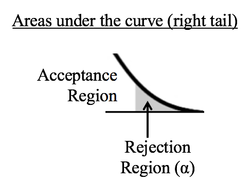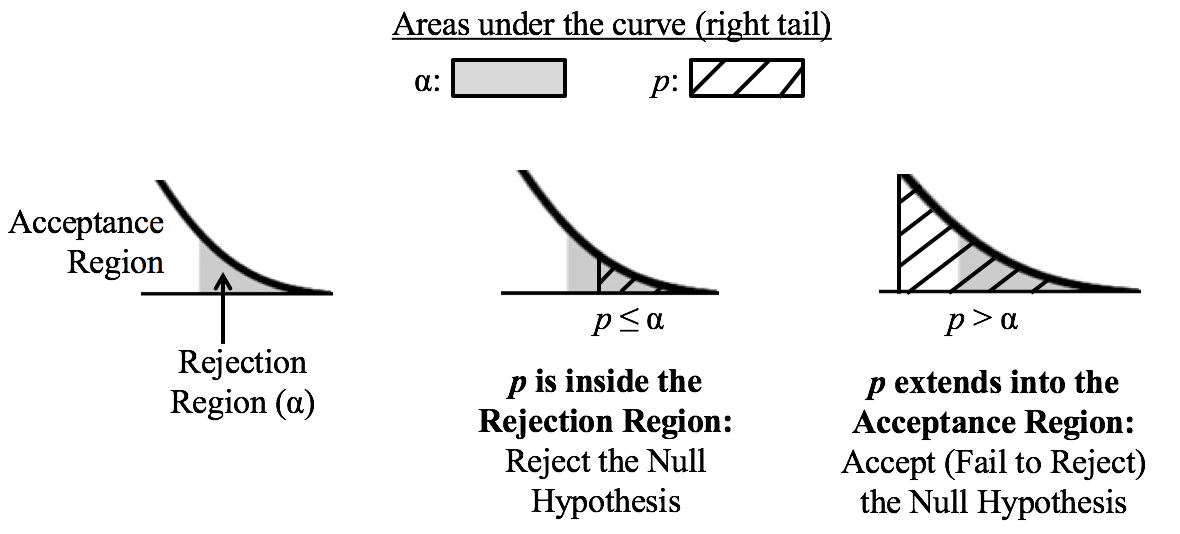|
Hypothesis Testing is confusing for many, if not most, people. The graphical concepts of Acceptance and Rejection Regions may help clarify the confusion.
Sample data is collected and the t-test is run. The test calculates a value for p. Like Alpha, p is a Cumulative Probability shown as an area under the curve of the t-Distribution. The illustration below shows the two possible results. Here, we show p as a hatched area and Alpha as a shaded area. The middle diagram shows the result in which p is calculated to be less than or equal to Alpha. In that case, the hatched area representing p fits entirely within the shaded Rejection Region which represents Alpha. So, the conclusion of the test is to Reject the Null Hypothesis. The right diagram shows the case in which p is larger than Alpha. The hatched area representing p is larger than the shaded Rejection Region, and it extends into the unshaded Acceptance Region. So, the conclusion of the test is to Accept -- that is, Fail to Reject -- the Null Hypothesis.
If you would like more information on Alpha, p, Null Hypothesis, Fail to Reject, and other concepts in Hypothesis Testing, there are individual videos on each concept in my YouTube channel, which has the same name as the book: "Statistics from A to Z -- Confusing Concepts Clarified."
0 Comments
Leave a Reply. |
AuthorAndrew A. (Andy) Jawlik is the author of the book, Statistics from A to Z -- Confusing Concepts Clarified, published by Wiley. Archives
March 2021
Categories |



 RSS Feed
RSS Feed